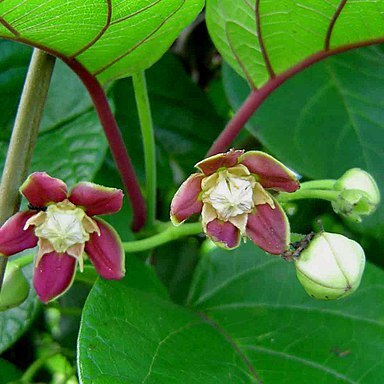Woody climber, up to 10 m high. Stipules forming a band connecting the pair of petioles and divided into several horizontally spreading blunt teeth. Corona lobes broadly obcordate with subulate dorsal process. Flowers greenish outside, purplish inside with distinctive yellowish marking.
Pale greenish-white or cream flowers.
A woody climber

